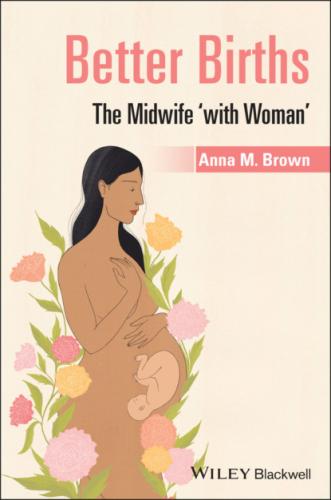As identified from the literature above, the ‘with woman’ concept is a complex phenomenon and includes a range of antecedents. These consider emotional, psychological and spiritual wellbeing, physical health, midwifery knowledge and skills and resource implication to fulfil the concept. Each of these antecedents will be considered in turn and the attributes pertaining to behaviour, process and environment are examined for the subsequent consequences.
Wellbeing and Health Through Positive Behaviour
The terms ‘emotional wellbeing’ and ‘psychological and spiritual health’ were identified from the literature as antecedents to the ‘with woman’ concept (Hunter 2009; Huber and Sandall 2009; Aune et al. 2014; Hunter 2015 for emotional wellbeing and Bradfield et al. 2019c; Perriman et al. 2018; Nystedt et al. 2014 for psychological and spiritual health). The study by Hunter (2009) suggests that a Positive Presence Index (PPI) administered to women during labour and birth, either in a hospital or a birth centre environment, resulted in a higher PPI scores for those women in the birth centre due to improved interaction and personal quality of midwifery care. A meaningful relationship based on trust through continuity of midwifery care (Perriman et al. 2018) and a shared philosophy between a woman and midwife has an impact of satisfaction on both (Bradfield et al. 2019c) and is a consequence of this approach. Support during childbirth results in reduced anxiety and fear, and courage of the woman to give birth (Nystedt et al. 2014).
A calm and positive midwifery presence as described by Huber and Sandall (2009), and provision of continuous support through relational competence Aune et al. (2014), are other attributes of the ‘with woman’ concept. The midwife demonstrates behaviour of listening, acknowledging the woman's feelings, displays empathy and sensitivity and provides reassurance and affirmation of the woman's ability to birth her baby. Hunter (2015) suggests that a therapeutic space is created through mutual recognition and respect as attributes, which consequently empower both the woman and the midwife (Dahlberg and Aune 2013; Andrews 2017). Hunter et al. (2017) found that the attribute of mindfulness can provide a way for midwives to contain levels of stress. This can be achieved through a reconnection with self and the woman to improve job satisfaction and provide holistic ‘with woman’ care.
Processing Midwifery Knowledge and Skills
A ‘with woman’ concept demands antecedents of sound midwifery knowledge and competent skills. The integrative review by Bradfield et al. (2018a,b) of this concept has identified the attribute of a dynamic developing process of this construct. The authors suggest a transference of power to the woman through effective informed decision making and facilitation of ‘space’ by the midwife that enables this process (Dolin 2017). However, much of the literature that explores related concepts, such as ‘women centred care’, can have a wide variation in how this is interpreted. Leap (2009) suggests that whilst contesting meanings of the term, the focus should be on shifting the locus of control to the woman, in meeting her individual needs through safe, supportive and gentle care.
The phenomenological study by Bradfield et al. (2019b) indicates that midwives consider the ‘with woman’ phenomenon as an essential element to the practice and identity of their profession. Midwifery knowledge and experience informs their skills underpinned by a ‘with woman’ philosophy that defines and identifies them as experts in their field. Being ‘with woman’ in contemporary midwifery as best practice needs to be recognised, maintained and disseminated to future generations of midwives (Power et al. 2016). In addition, maintaining a therapeutic partnership with women and their families requires advanced, effective communication skills to provide advocacy for women with knowledge and confidence (Bradfield et al. 2019a, Bradfield et al. 2019b). The mother and midwife relationship through continuity of care provides midwives with greater flexibility and responsibility, leading to improved maternal satisfaction (Astrup 2016).
Physical Wellbeing Through Environmental Factors
The interpretation of continuous support during labour has changed over time. Women have been cared for and supported physically and psychologically, across the ages, by other women during childbirth. Changes in models of care during labour have impacted the way women are supported during this life‐changing event. Consequently, a rise in hospital births in the post‐war era has medicalised childbirth and interrupted the relationship of midwives with women in the home environment. However, a move towards provision of continuity of support in labour, by midwives as ‘ritual companions’, over the last few decades, has had an impact on birth outcomes (Reed et al. 2016). Physical, psychological and spiritual support has resulted in a reduced risk of caesarean section, instrumental delivery and need for analgesia (McDonald 2011).
Innovations
